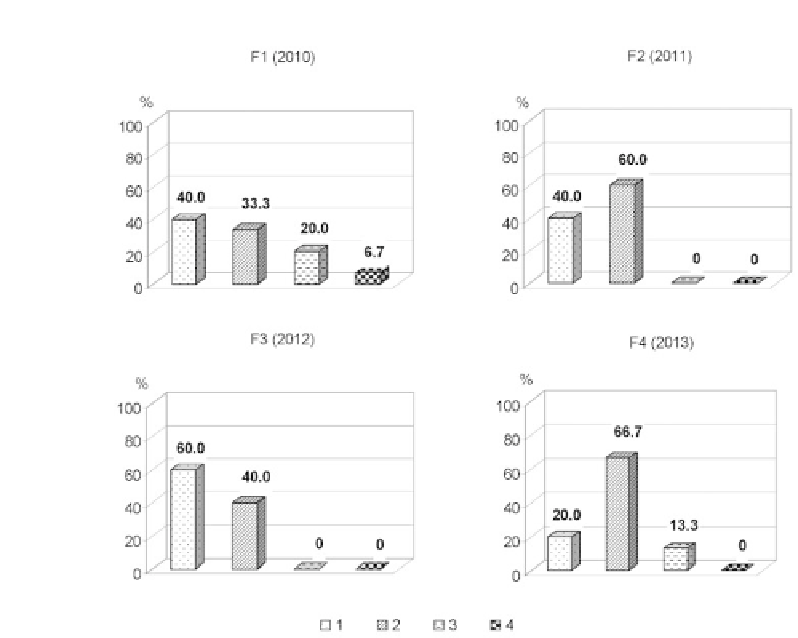Agriculture Reference
In-Depth Information
FIGURE 9.3
The distribution of hybrid (F
1
; F
2
; F
3
; F
4
) and original forms in biological
sustainability, %.
Groups: 1—low (< 50%), 2—moderate (51-70%), 3—high (71-90%), 4—very
high (> 90%)
F
1
hybrids compared with their parents were characterized by higher biological
stability of plants, as evidenced by the appearance of the fourth group, comprising 10
percent of the forms (Figure 9.4).
The vegetation period of 2011 as a whole (except for the month of July) was char-
acterized by high air temperature. Lack of moisture was recorded in the months of
July (67.1% of normal rainfall), August (47.7%), and September (87.0%). The excess
amount of precipitation (52.0 mm, which is 49% above normal) during the second
half of June contributed to the creation of favorable conditions for the development of
pathogenic fungi.
Under these conditions, the distribution of samples of spring wheat in the group-
identifi ed general rule is manifested in the same proportion of groups in the analysis,
as the whole set of samples, and individually F
2
hybrids and parental species (Figures
9.3 and 9.4). In 40 percent of the cases, we detected the low ability of plants to with-
stand the effects of adverse environmental factors (Figures 9.3 and 9.4).















Search WWH ::

Custom Search